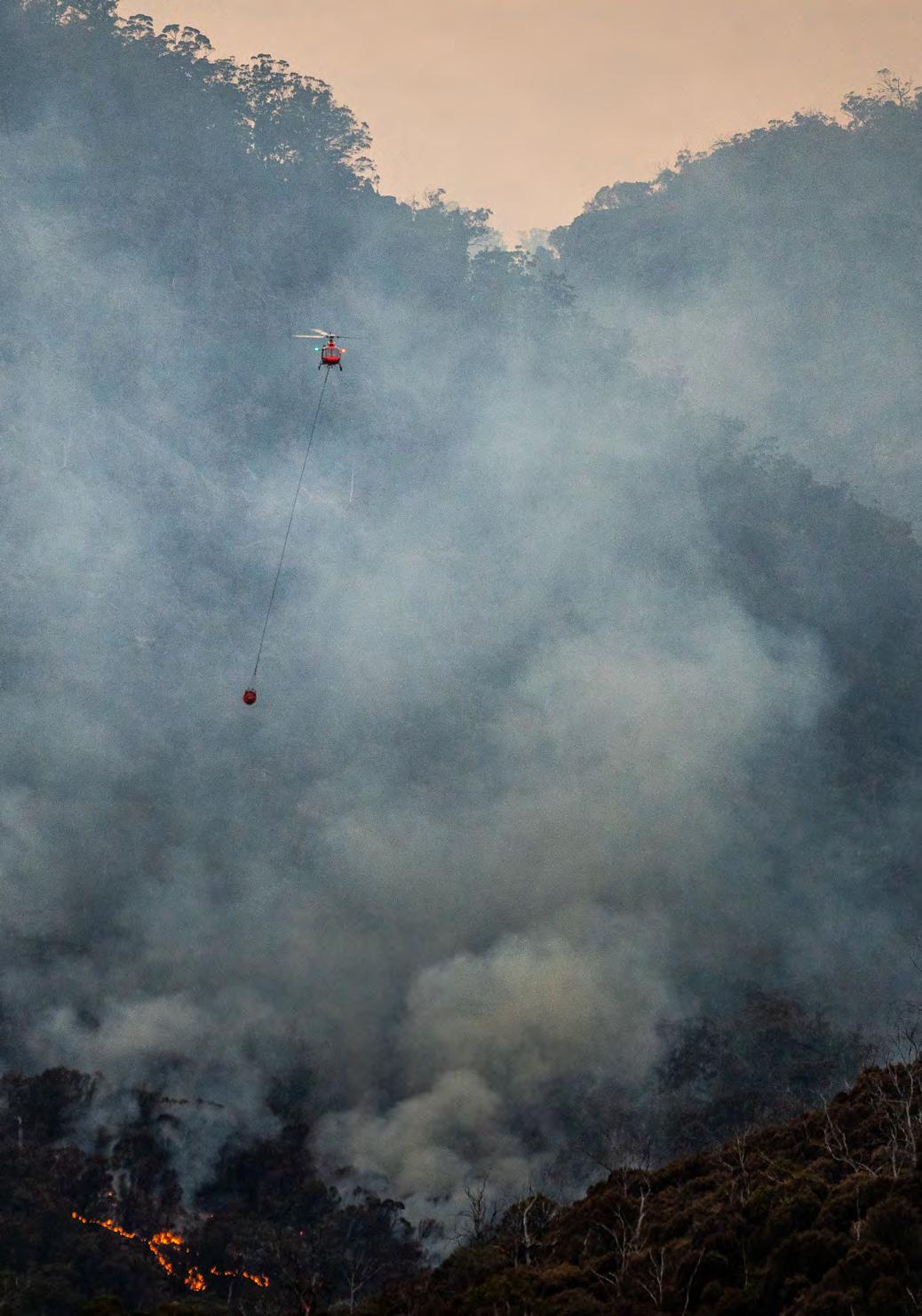
12 minute read
The Climate Cure: The inaugural Talbot Oration
Tim Flannery
At the inaugural oration in honour of revered former AM Director Frank Talbot AM, Professor Tim Flannery suggests that the “cure” for climate change is at hand — all we need is leadership and a willingness to embrace the science.
Excerpt of a speech by Professor Tim Flannery, Distinguised Fellow in Climate Change at the AM. The Talbot Oration was delivered on 3 June, 2021.
Tonight, what I want to talk about is the leadership that's required to start dealing with this emerging disaster of climate change. I really want to focus on solutions because the solutions are where the power lies to inspire young people, to change government, to get industry working. But in order to do that we really need to know where we are right now, and sadly we are not in a great place. In this year of 2021, we are at a fork in the road, and that's because carbon dioxide concentrations in the atmosphere have now reached a level of about 418 parts per million. The global average temperature as a result of that is now at about 1.2ºC above the preindustrial average, and across Australia the average surface temperature has risen to nearly 1.5ºC above the preindustrial average already.
Now, you remember the scientists informing the politicians at the 2015 Paris climate change conference that 1.5ºC is where we should be heading. Well, we are there already in Australia and there is no sign that the pollution stream we are producing is beginning to significantly abate, at least as yet.
The problem has grown rapidly in recent years. I was made Australian of the Year in 2007, in part because of my contribution to raising awareness about the climate issue. But since 2007, globally we've produced about a third of all of the CO₂, the greenhouse gas emissions, that we've ever produced as a species. It's horrific the way that the problem just keeps on getting bigger and bigger and bigger.
Left: Firefighting at Fingal, Tasmania in 2020. Photo by Matt Palmer on Unsplash
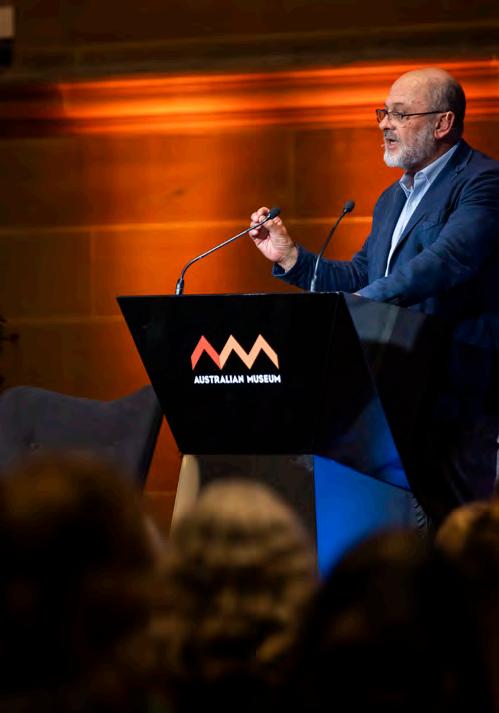
Where we are now
And so now, we are at that fork in the road where we must turn things around. We've now been well and truly warned by nature about what is in store if we don't do that. The namesake of this lecture, marine biologist and former Australian Museum Director Frank Talbot, knows probably better than anyone what the Great Barrier Reef was like before bleaching. I was lucky enough to do my first dive on the reef in 1972, four years before the first bleaching event, and I still hold that memory. It's a very precious thing. I know that my children will never see that and I'll never see it again because the Reef today is about 70% or more dead as a result of repeated bleaching episodes. And the scientists tell us that if we get to 1.5ºC above the preindustrial average as a global average temperature, the Reef is going to be mostly dead. And if we go up to 2ºC it will be 99.8% dead. So we know that there is a lot at stake.
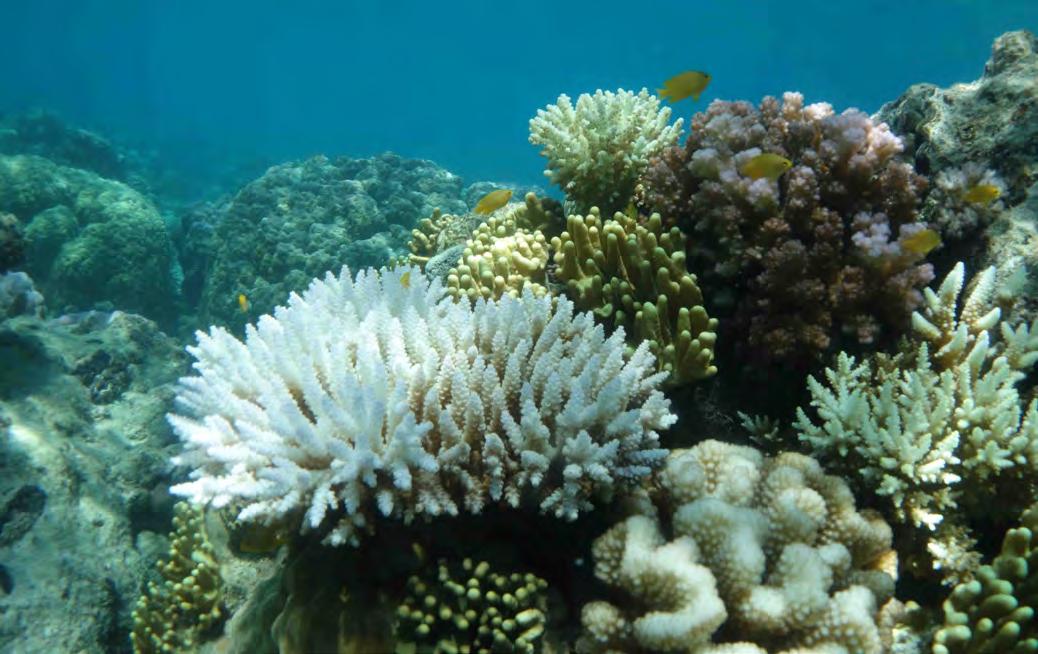
In the last three years we've seen unbelievable megafires devastating this country. It's easy to forget how bad things were during those fires. And when I talk to our firefighters, people who have spent their entire life fighting fires in Australia, they will tell you in incredible detail about how the behaviour of fires have changed as the country has gotten drier and conditions have got hotter. In the Black Summer of 2020, we saw 21% of the temperate broadleaf forests of the nation go up in flames. The biggest area burnt before that in any fire season was 2%. This is a quantum leap, a tipping point in the climate system. Fire in Australia has now changed, it has become something very different to what it was before. We know a lot about what is happening.
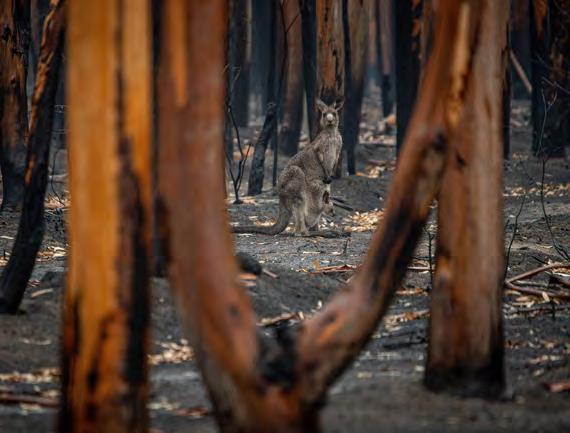
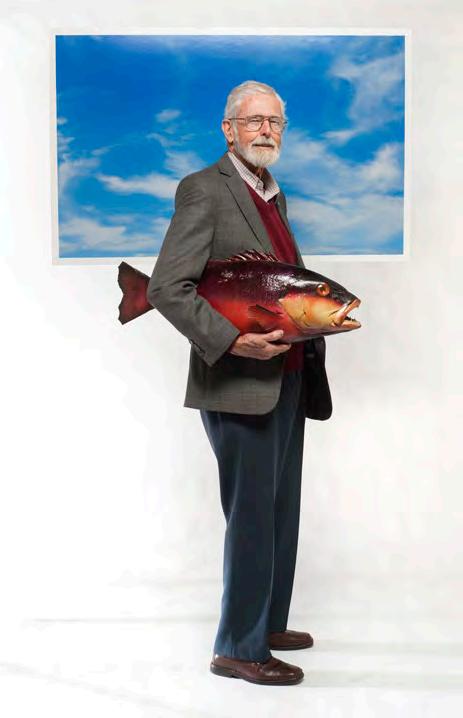
Opposite top: Professor Tim Flannery speaking at the inaugural Talbot Oration, 2021. Photo by Anna Kučera Opposite bottom: Bleached coral near Lizard Island Great Barrier Reef. Photo by Dr Lyle Vail Above: A kangaroo and her joey who survived the forest fires in Mallacoota, 2020. Photo by Jo- Anne McArthur on Unsplash
Left: Frank Talbot holds a specimen of the Red Bass (Lutjanus bohar), a species that he studied on the Great Barrier Reef. Photo by Stuart Humphreys
About the Talbot Oration
Named in honour of former Australian Museum Director Professor Frank Talbot, this annual oration celebrates his commitment to, and achievements in marine research and environmental studies in Australia and on the global stage.
The Talbot Oration showcases advances in the field of climate change research and environmental conservation, enabling the public to better understand how responses to the climate challenge determine our future prospects, health, and the sustainability of our natural environment.
Below: Visitors at the AM exhibition, Spark: Australian innovations tackling climate change. Photo by Anna Kučera
Now is the time for action
We are getting to the point where unless we can cut emissions now, hard and fast, the ability to control a situation will slip away from us. The probabilities that it will get out of our control will increase, and the Earth’s climate system will hit a big tipping point. Either we will see a melting of the poles, a change in the Amazonian rainforest that will emit masses of carbon, a change in ocean circulation, or perhaps a melting of the permafrost. We can see all of these tipping points getting ever closer. In fact, the eastern Amazon rainforest has now changed from being a carbon sink to a carbon source due to droughts and fires and land clearing and all the rest. We need to act before they tip.
So the reason that this year is so important is that if you look at what we need to do to go through 1.5ºC but then come back to within 1.5ºC by the end of this century, we need to be drawing down about 10 gigatons of CO2 per year, and cutting our greenhouse gas emissions by about 7% a year between now and 2030. There are ways that that can be done.
At the state level we are doing so well. It doesn't matter whether your state is run by a Liberal government or a Labor government, they are all in agreement that clean energy is the way forward. Here in New South Wales, for example, we have legislated a series of changes that should see our electricity grid in this state do away with most fossil fuels by about 2030. That's a fantastic outcome.
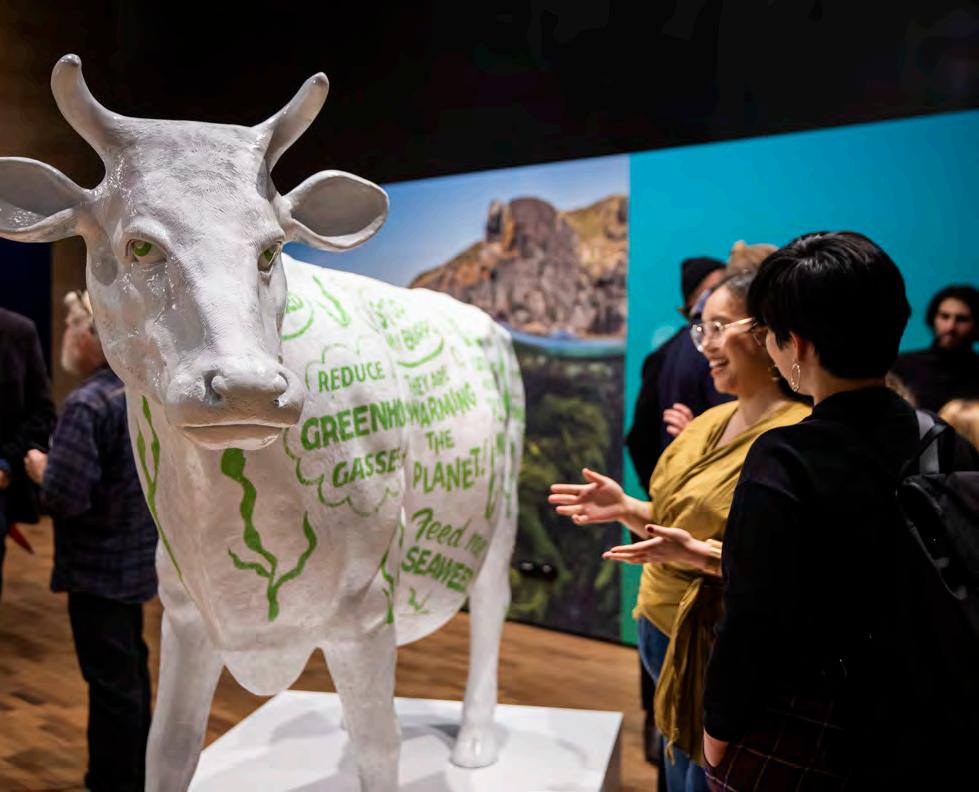
Finding the cure
In David Attenborough's witness statement about his life on this planet, which you can watch online, he says we need to restore Earth's function.
At the moment, the damage that's occurring in the oceans is just going deeper and deeper and deeper. We are now trawling in very deep waters around the world, stirring up carbon that has been stored for millennia and millennia and releasing it back into the system, as well as destroying life on the seafloor that helped sequester that carbon. We can see that damage occurring. If the oceans are healthy, the planet will remain healthy. So we desperately need to honour that vision that David Attenborough gave us of letting our Earth heal itself, restoring the forests, restoring the soils, restoring the oceans. This is not just an easy add-on, this is a core business. And if we do that, we will still probably be short of those 10 gigatons a year, we still won't have the full drawdown capacity we need.
We are wasting millions and millions of dollars by inappropriately funding things that shouldn't be. An example is on Saibai Island up in Torres Strait a few years ago, the Federal Government saw that the town was being inundated and they built a seawall at the cost of $25 million. It lasted less than a year. Some areas can be defended, other areas have to be just surrendered and you move. We need a triage approach.
If you consider what needs to be done, it can look big, it can look overwhelming, but the reality shows us that we can do such things. It's now a win-win situation, we can move through to a cleaner energy base, cut those emissions 7% a year and develop entire new industries, as people who are in the business of making money know. We can do it. We are held back by a political block, not by any kind of structural block. There are, thankfully, a few options.
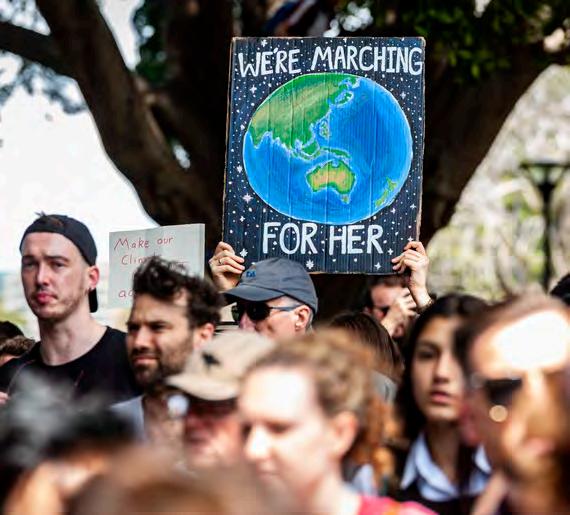
Above: Tens of thousands of people, led by school kids, attend the Climate Strike in the Domain in Sydney on 20 September 2019. The rally was part of a global movement ahead of UN climate talks later that month. Photo by Abram Powell
Climate action at the Australian Museum
Visit: Changing Climate, Level 2
An interactive display that asks not how we will survive Australia, but how Australia will survive us!
Online: Spark virtual tour
In this special exhibition now online, learn about inventions and innovative approaches offering positive solutions to the climate crisis.
Do: Join a citizen science project
The Australian Museum’s citizen projects such as FrogID and DigiVol are fantastic ways the whole family can contribute to creating a positive future.
Your action is so important!
Discover more ways you can make a difference: australian.museum/learn/teachers/learning/ sustainability
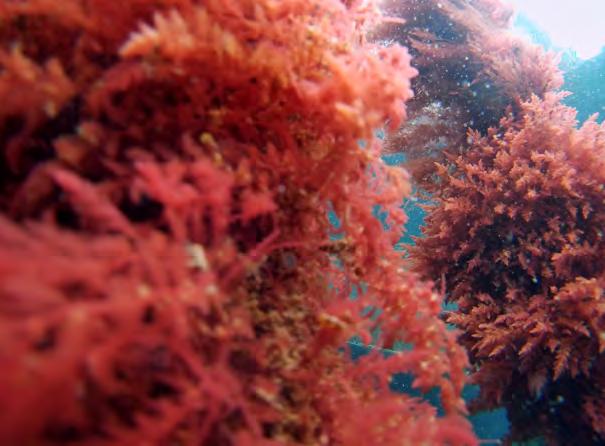
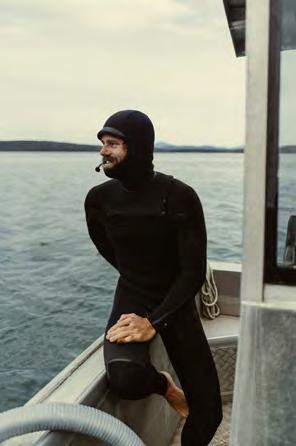
The magic of seaweed
One of those options is seaweed farming. Sam Elsom — previously a fashion designer — has a marvellous red seaweed farm off Tasmania. Sam has developed a farm of a particular red seaweed called asparagopsis; it's a very common seaweed in southern Australia. It has the peculiar property of producing a bromine compound that stops the little bacteria that live in the cows' rumen from producing methane. And you need a tiny amount of it to do that, just 25g per cow per day, and that reduces the methane emissions in cattle by 98.8%. Incredible. And while that's great news for methane emissions, it's also really good news for farmers because the energy that's in the methane that is normally lost to the cow gets returned to the cow. So it's like giving a cow 20% more food, it's a healthier animal. So you need to feed it less, it's healthier, it grows faster, it's a great outcome. So that's just one seaweed solution, but the world is full of potential seaweed solutions. I’m a bit of a seaweed fanatic.
Another seaweed solution is just letting the seaweed sink to the ocean bottom. We know that the transport of seaweed into the deep ocean is one of the major ways carbon can be taken out of the atmosphere and sequestered in the ocean bottom. So if we can enhance that, we will be doing something really good for our planet. And you have to know about the scale of the deep ocean. The ocean below 3000m is 95% of all habitat on Earth, it is enormous. The ocean itself is 500 times bigger than the atmosphere. So, if we could theoretically grab half of all the carbon dioxide in the atmosphere and shove it straight into the deep ocean right now, we'd reduce the CO2 in the atmosphere obviously by 50%, we'd increase the CO2 in the deep ocean by…anyone want to guess? 2%. The deep ocean is really big, that's why it's the hidden puppet-master of the whole system, it's the receptacle for the carbon, it's where most of the stuff goes to keep the balance of our planet. So that's really important.
I know we have to tread carefully with all of these things, this is a planetary scale intervention, so we have to be careful, but I'm heartened by the seaweed solution because we know it occurs naturally, it goes down submarine canyons into the deep ocean where it is eaten by sea cucumbers and the carbon stays in the bottom. So if we can put a bit more seaweed in, even if it's a few gigatons a year, that's really, I think, a positive move.
Images: Asparagopsis being cultivated at Sam Elson’s seaweed farm, Sea Forest, in Triabunna, Tasmania. Images © Sea Forest
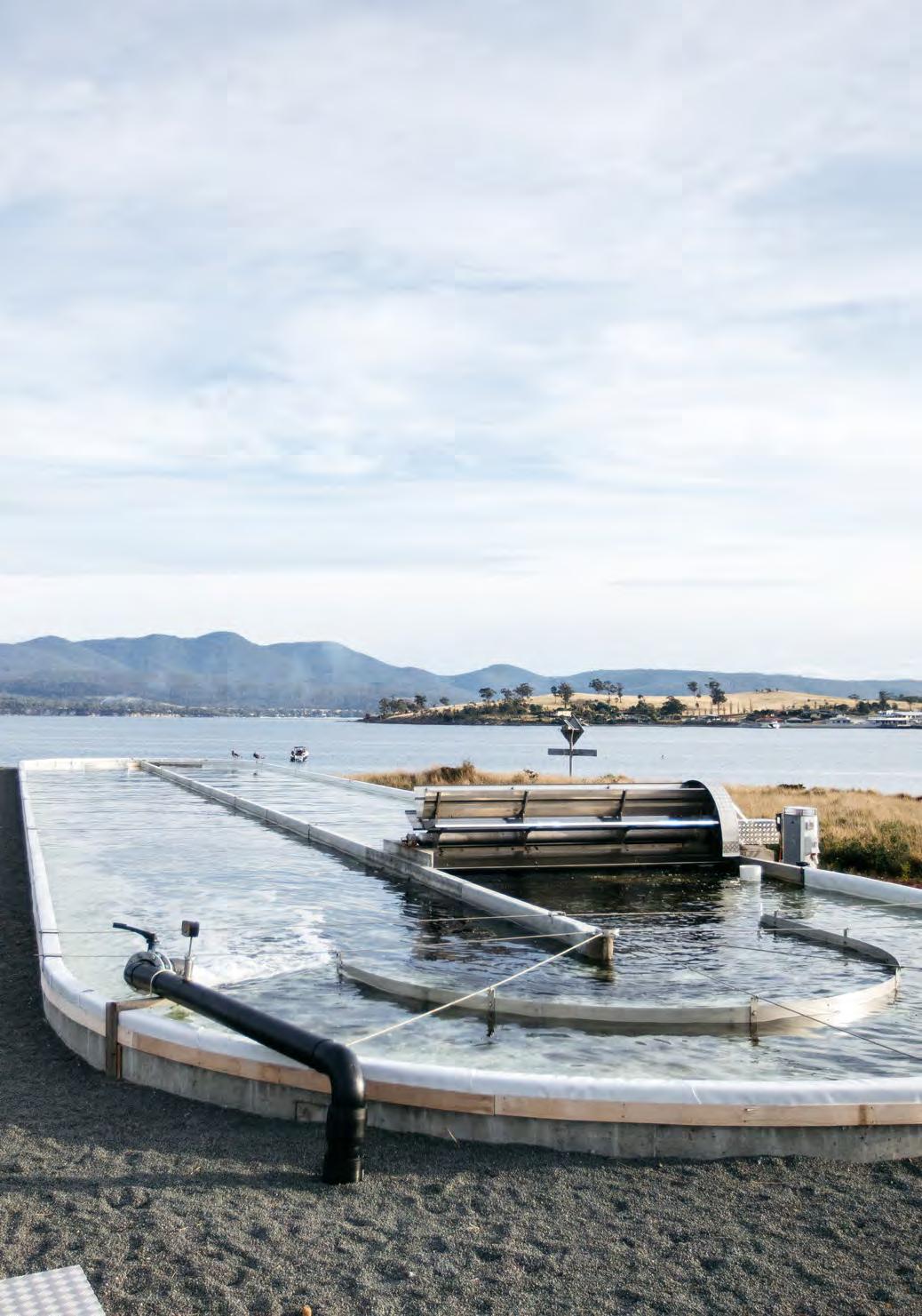

Left: Charlie Prell’s Farm from Crookwell on the NSW Southern Tablelands. His farm has several wind turbines on it and with neighbouring properties generate enough energy to run the farm and feed back in to the energy grid. He was interviewed for the Climate Change exhibition in November 2019. Photo by Abram Powell
A rock that is a carbon sponge
Another way we can deal with the problem is by using silicate rocks. They are really common in Australia, olivine is a good example of a silicate rock. Grind up a kilogram of olivine, for example, you capture 1.25kg of CO2 as that olivine decomposes. And in the right conditions, it will decompose in a couple of weeks.
In the last year, work has been done on corn farms in the US. People have taken olivine rock, spread it over the farmland and seen that the crop yield increases by about 12%, because all the fresh minerals are getting in there. So not only are you taking CO2 out of the air, you are increasing your crop yields.
The big problem with the silicate rock solution is that at the moment we quarry and transport rock using fossil fuels, so that negates the benefit you get. But if we can clean up our energy and transport systems in the next 10 or 15 years, we will open up an enormous opportunity for a very potent solution that can take many gigatons of CO2 out of the air per year. And, by the way, olivine rocks and the deep ocean are the two biggest ways that the Earth regulates its own climate system.
A cleaner, brighter future awaits
We know we can do this. But the first step to doing it is cleaning up the grid. Every coal-fired power plant that closes down is a step closer to that. Every gas plant that isn't built or closes down is a step closer to giving us the drawdown that we need. So, this is a holistic transition that we are looking at in Australia.
We have to start the transition, we have to really kickstart it in a big way and see those emissions starting to drop. We have to start restoring the land, and that's a massive job. We have two centuries of pioneering destruction of our environment behind us. And the offer has been made from our Indigenous leaders to go on the journey with them to start using the land differently, to start living differently on the land. That needs to become our law if we want to start repairing our planet.
So, that's where we are. We know where we need to go, we now need to take leadership positions, all of us, to make sure that over the coming years we get the cure we know we all need. Thank you very much.
Professor Tim Flannery is a Distinguished Visiting Fellow at the Australian Museum.










